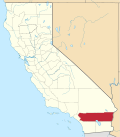History
Bradshaw's Ferry was established by William D. Bradshaw soon after he had discovered the route of the Bradshaw Trail when he made a partnership with William Warringer of La Paz to establish a ferry on Providence Point, across the river from Olive City and the road to nearby La Paz. Williams returned to Los Angeles and published an announcement in the Los Angeles Star of the new road between San Gorgonio Pass he had established and of the ferry to the goldfields at the end of the trail. [2]
On November 7, 1864, the Territorial Legislature permitted the ferry, now in Yuma County, Arizona Territory, to charge $4.00 for a wagon and 2 horses, $3.00 for a carriage and 1 horse, $1.00 for saddle horse, $0.50 for a man afoot, $0.50 a head for cattle and horses, $0.25 a head for sheep. [3] It was authorized to operate ferries at any and every point between Mineral City and five miles above La Paz for up to twenty years. At first the ferry operated at Olive City then in 1864 at Mineral City, and lastly at Ehrenburg from 1866 when it replaced the two other settlements. William Bradshaw himself left operations of the ferry to his brother Issac and died in 1864, officially a suicide, but possibly a murder. Issac Bradshaw sold out his interest in 1867. [4]
This page is based on this
Wikipedia article Text is available under the
CC BY-SA 4.0 license; additional terms may apply.
Images, videos and audio are available under their respective licenses.


